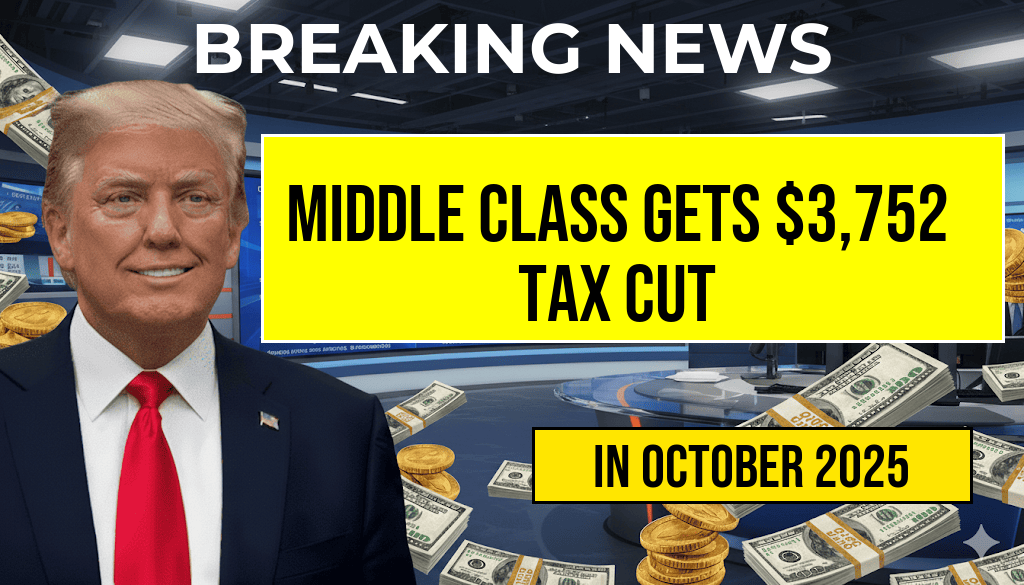In a significant move aimed at providing relief to middle-income Americans, a new federal legislation has resulted in an average $3,752 tax cut across all 50 states. This legislation, enacted earlier this year, is expected to impact millions of households by reducing their tax burdens and increasing disposable income. The measure reflects a bipartisan effort to bolster the economic stability of middle-class families amidst ongoing inflationary pressures and fluctuating job markets. Experts suggest that the tax reductions could stimulate local economies by increasing consumer spending, while policymakers highlight the broader goal of promoting economic fairness. The following analysis breaks down how this legislation works, its regional implications, and what it means for American households.
Understanding the Tax Cut Legislation
The legislation, officially titled the Middle-Class Relief Act of 2023, was introduced in early 2023 and signed into law by the President in March. Its primary objective is to reduce the tax burden on households earning between approximately $50,000 and $150,000 annually, which constitutes the core of America’s middle class. The legislation phases in a series of tax credits, deductions, and adjustments designed to provide consistent relief throughout all states, regardless of regional economic differences.
How the $3,752 Average Tax Savings Are Calculated
The figure of $3,752 represents the national average savings per household, but actual benefits vary by state and income level. The calculation considers several factors, including:
- State-specific tax codes and rates
- Income brackets eligible for relief
- Adjustments for local cost-of-living variations
- Additional federal credits aimed at middle-income earners
According to estimates from the Internal Revenue Service (IRS), the law increases standard deduction amounts and introduces new tax credits targeted at middle-income families, effectively lowering taxable income and reducing owed taxes.
Regional Impact and Variations
While the average benefit is $3,752, regional disparities exist due to differing state tax policies and cost-of-living factors. States with higher income taxes or more progressive tax structures tend to see larger absolute savings, whereas states with lower tax rates experience more modest reductions.
State-by-State Breakdown
| State | Average Savings | Tax Rate Tier |
|---|---|---|
| California | $4,200 | High |
| Texas | $3,300 | Low |
| New York | $4,050 | High |
| Florida | $3,100 | Low |
| Illinois | $3,850 | Medium |
Economic and Political Reactions
Reactions across the political spectrum have been mixed. Supporters argue that the law provides vital relief to middle-income families struggling with inflation and rising living costs. Households report feeling more confident about their financial stability, with many seeing noticeable reductions in their monthly tax payments.
Opponents, however, contend that the legislation primarily benefits higher-income households within the middle class and could exacerbate budget shortfalls at the federal level. Critics also warn that the increased fiscal deficit might lead to future tax hikes or spending cuts in other areas.
Expert Opinions
Economic analysts from institutions like the Brookings Institution suggest that targeted tax relief can serve as an effective stimulus, especially when aimed at middle-income earners who tend to spend a larger portion of their income. Conversely, fiscal conservatives emphasize the importance of fiscal responsibility, cautioning against expanding deficits.
What This Means for Middle-Class Households
For households in the middle-income bracket, the legislation translates into tangible benefits. Families can expect to see an increase in take-home pay, which could help offset costs associated with healthcare, education, and housing. Many also anticipate the potential for increased savings and investment opportunities.
Furthermore, the legislation’s focus on simplifying the tax code means that taxpayers may experience easier filing processes and reduced paperwork. The Internal Revenue Service has announced plans to update its forms and instructions to reflect the new provisions, aiming to streamline compliance for millions of Americans.
Looking Ahead
As the legislation takes effect, state governments are also exploring complementary measures to maximize the benefits for their residents. Several states have announced or are considering adjusting their state-level taxes or providing additional credits to align with federal efforts.
For more details on the legislation and its implications, residents can consult official resources such as the IRS website or local tax authorities. Staying informed about ongoing updates ensures that households can optimize their tax planning strategies.
As the legislative landscape evolves, analysts continue to monitor the long-term economic impacts, including potential shifts in consumer behavior and fiscal policy adjustments. The $3,752 average tax cut signifies a notable step toward easing the financial pressures faced by middle-class Americans, fostering a more balanced economic environment across the country.
Frequently Asked Questions
What is the total tax cut amount for the middle class across all 50 states?
The new legislation provides a tax cut of $3,752 for the middle class across all 50 states, offering significant financial relief.
How does the legislation benefit middle-class taxpayers?
The legislation reduces the tax burden for middle-class families, increasing their disposable income and supporting economic stability.
Which states are affected by this new tax legislation?
The tax cut applies uniformly across all 50 states, ensuring nationwide benefits for middle-class taxpayers.
When will middle-class taxpayers start to see the tax cuts?
Taxpayers can expect to see the benefits reflected in their upcoming tax filings, starting with the current fiscal year following the legislation’s implementation.
Are there any additional benefits included in the new legislation for the middle class?
Besides the tax cut, the legislation may include other measures such as increased deductions or credits aimed at supporting middle-income households.






